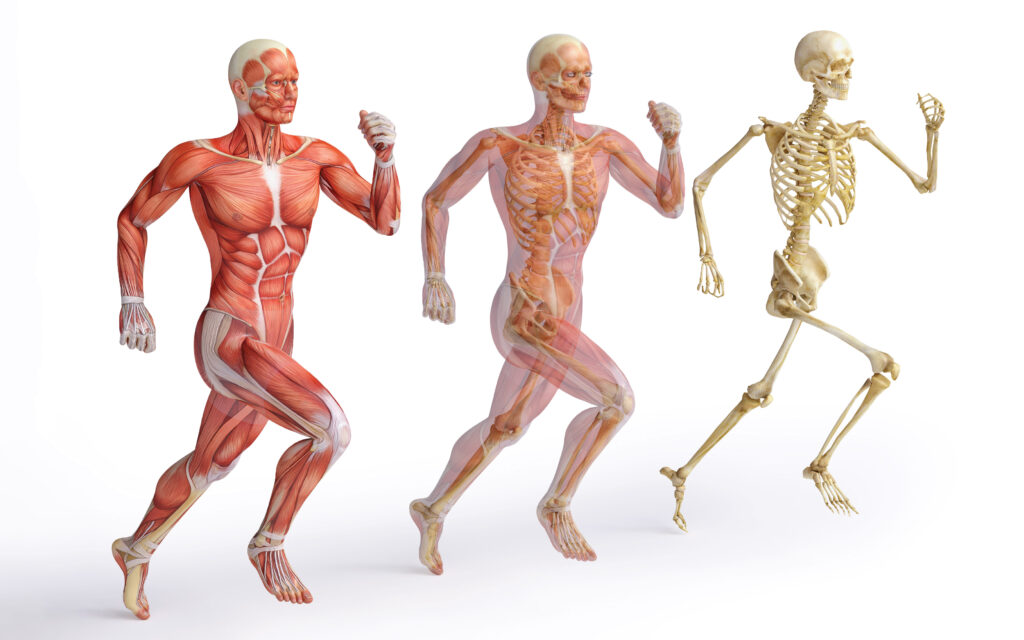Have you ever wondered why some people stay mobile and strong even in old age? Others face joint pain and muscle weakness. The answer is in taking care of your body’s musculoskeletal system naturally.
Keeping your joints and muscles healthy is key to feeling good. Your body needs muscles, joints, and tissues to move and do daily tasks. Using natural ways to improve mobility can greatly enhance your comfort and function.
It’s not just about avoiding pain; it’s about living an active life. Whether you’re an athlete or work at a desk, there are ways to boost your body’s strength and health. These strategies help you stay active and well for years to come.
Key Takeaways
- Joint health impacts overall quality of life
- Natural wellness strategies can improve mobility
- Proactive muscle support prevents future complications
- Comprehensive approach includes nutrition, exercise, and lifestyle
- Early intervention is crucial for long-term musculoskeletal health
Discover a soothing, plant-based solution that absorbs quickly—no greasy residue, no overpowering scent. Are you ready to embrace natural, day-long comfort?
Understanding Joint, Back, and Muscle Health Fundamentals
The musculoskeletal system is a complex network that helps us move and supports our body. It connects muscles, joints, and connective tissue for smooth movement and strength.

To understand muscle health, we must see how body parts work together. Muscles and joints team up to move, absorb shock, and keep us stable. Each muscle group is key for our daily tasks.
The Connection Between Joints, Muscles, and Overall Mobility
Joint health relies on strong muscles and flexibility. Healthy muscles protect joints by supporting them and reducing stress during activities. Weak or imbalanced muscles can strain joints and lead to injuries.
Common Causes of Joint and Muscle Discomfort
Many things can cause muscle and joint problems. Age-related changes, repetitive actions, bad posture, and not exercising enough can harm musculoskeletal health. Inflammation and muscle tension often come from these issues.
The Role of Connective Tissue in Body Support
Connective tissue is vital for supporting our body. It holds different structures together, giving strength, flexibility, and shock absorption. Keeping connective tissue healthy is key for good physical performance and injury prevention.
Essential Nutrients for Support For Healthy Joints, Back and Muscles

Nutrition is key for healthy joints, back, and muscles. Knowing the right nutrients can greatly improve your musculoskeletal health. These nutrients help with flexibility, strength, and movement.
Omega-3 fatty acids are great for fighting joint pain. Foods like salmon, walnuts, and flaxseeds are full of these good fats. They help reduce inflammation and ease muscle soreness.
Vitamins and minerals are vital for muscle strength. Vitamin D and calcium help keep bones and muscles strong. Vitamin D helps your body absorb calcium effectively, keeping your system healthy.
Supplements like glucosamine and chondroitin also support joints. They help keep cartilage healthy and prevent wear and tear. Adding these to your diet or supplements can boost joint flexibility and mobility.
Don’t forget to eat colorful fruits and veggies for antioxidants. They protect your muscles and joints from damage. Berries, leafy greens, and peppers are packed with nutrients that help your body heal.
Imagine moving freely again—targeted, fast-acting relief for joints, muscles, or lower back that fits into your busy routine. Ready to regain your comfort and flexibility?
Exercise Strategies for Optimal Joint and Muscle Function
Physical activity is key for keeping joints and muscles healthy. The right exercises can strengthen your body and improve flexibility. Choosing the right workouts can greatly improve your musculoskeletal health.
Low-Impact Workouts for Joint Protection
Exercises that are easy on the joints are vital for keeping you mobile. Swimming and cycling are great because they don’t put too much stress on your joints. Water aerobics is also a good choice, as it lets you move your whole body with little resistance.
Strength Training Guidelines for Muscle Support
Building muscle strength needs a smart plan. Bodyweight exercises like squats and lunges are safe and effective. Resistance bands are also great for strengthening muscles without harming your joints.
Flexibility Exercises for Enhanced Mobility
Flexibility exercises are crucial for keeping your range of motion and avoiding muscle stiffness. Gentle yoga, dynamic stretching, and specific mobility drills can greatly enhance your flexibility. Regular practice can lower injury risk and support long-term joint health.
Remember, the success of exercise comes from gradual progress and listening to your body. Talk to a fitness expert or doctor to create a workout plan that fits your needs.
Lifestyle Modifications for Better Musculoskeletal Health
Starting a healthier lifestyle means understanding the importance of ergonomic improvements. Small changes can make a big difference in our body’s health. The right setup at work is key to keeping our joints and muscles strong.
Improving your posture is a simple yet powerful way to protect your body. Adjusting your computer screen, using a supportive chair, and keeping your spine straight can help a lot. Ergonomic chairs and standing desks are great for reducing strain at work.
Managing stress is also crucial for muscle health. Too much stress can cause muscle tension, lower mobility, and increase inflammation. Techniques like deep breathing, meditation, and exercise can help reduce stress. This supports your muscles and overall health.
Getting enough sleep is another important factor. Sleep helps our body repair and rebuild tissues, aiding in muscle recovery and reducing inflammation. Aim for 7-9 hours of sleep each night to help your body heal and stay strong.
Natural Remedies and Supplements for Joint and Muscle Support
Managing joint and muscle health needs a whole-body approach. Natural anti-inflammatories and herbal remedies are great alternatives. They help those looking for relief from pain and support for their muscles and joints.
Looking into natural solutions can offer soft yet strong support for your body’s movement and comfort. Joint health supplements are getting a lot of attention. They might help with inflammation and improve overall health.
Herbal Solutions for Inflammation Management
Herbs like turmeric and ginger are top choices for natural anti-inflammatories. They have compounds that cut down muscle and joint inflammation. This helps your body heal naturally.
Supplement Recommendations for Joint Health
Supplements like glucosamine, collagen, and omega-3 fatty acids are key for joint health. Consulting with healthcare professionals is important. They help find the right supplements for you.
Alternative Therapies for Pain Relief
Methods like acupuncture, massage therapy, and stretching are great for pain relief. They offer a holistic way to handle muscle and joint pain. These methods can work well with traditional treatments.
Keep in mind, everyone reacts differently to natural remedies. Always talk to a healthcare expert before trying supplements or alternative therapies. This ensures safe and effective care for your joints and muscles.
Prevention Strategies and Daily Maintenance Tips
Keeping your muscles and joints healthy starts with taking action. Small steps every day can greatly improve your long-term health. This is key for your muscles and joints.
Mindful movement is a good place to start. Using the right body mechanics at work and during exercise can lower injury risks. Ergonomic adjustments and good posture help avoid wear and tear.
Muscle care isn’t just about hard workouts. Gentle stretching, low-impact exercises, and enough rest are also important. Simple exercises can keep your muscles flexible and joints moving smoothly.
Drinking enough water is vital for joint and muscle health. It keeps tissues elastic and supports your body’s function. Eating a balanced diet with anti-inflammatory foods also helps your body heal.
Managing your weight is another important step. A healthy weight lessens stress on your joints, especially in areas like knees and hips. Eating right and staying active can help you keep a good weight.
Preventing injuries and keeping your joints healthy is a daily task. By adding these simple steps to your life, you can protect your body. This way, you’ll enjoy better mobility and comfort for years.
Conclusion
Getting your joints, back, and muscles in top shape needs more than just treating symptoms. A holistic approach to health lets you take charge of your body. This means making smart lifestyle choices and being proactive about your health.
The path to better health starts with knowing how nutrition, exercise, and body mechanics work together. Making small, steady changes can make a big difference in your musculoskeletal health. By using the tips from this article, you can build a strong plan for staying strong, flexible, and pain-free.
Prevention is key to keeping your health strong over time. Using natural remedies, doing specific exercises, and eating mindfully can change how we see physical health. Those who stick to these methods will see better mobility, less pain, and a boost in physical energy.
Your body is amazing at healing and adapting. By taking a full-body approach to care, you can reach your wellness goals. This way, you can live an active, pain-free life for many years.





